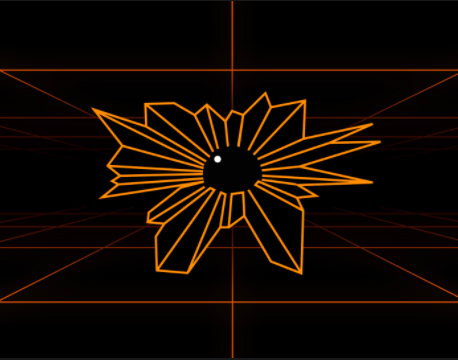I currently have a Synology 220+ and a couple of VPS’s, and I’m looking to consolidate, while getting out of Synology’s walled garden. I’ve already got a couple of 3.5’s in the Synology, and 4 2.5’s lying around and I’m planning on running a number of docker containers and a couple of vms.
That said, I’ve never built anything before, and basically just went to PCPartPicker, started with the case, and checked 5-stars on each component and went from there. So… how absurd is my build?
| Type | Item | Price |
|---|---|---|
| CPU | AMD Ryzen 5 5600X 3.7 GHz 6-Core Processor | $135.00 @ Amazon |
| CPU Cooler | Cooler Master MasterLiquid 360L Core ARGB Liquid CPU Cooler | $90.71 @ Amazon |
| Motherboard | MSI MAG B550 TOMAHAWK ATX AM4 Motherboard | $165.99 @ B&H |
| Memory | TEAMGROUP T-Force Vulcan Z 16 GB (2 x 8 GB) DDR4-3200 CL16 Memory | $26.99 @ Amazon |
| Storage | Seagate IronWolf NAS 8 TB 3.5" 7200 RPM Internal Hard Drive | Purchased For $179.00 |
| Storage | Seagate IronWolf NAS 8 TB 3.5" 7200 RPM Internal Hard Drive | Purchased For $179.00 |
| Storage | Seagate IronWolf NAS 8 TB 3.5" 7200 RPM Internal Hard Drive | $159.99 @ Adorama |
| Case | Fractal Design Meshify 2 ATX Mid Tower Case | $173.89 @ Newegg |
| Power Supply | Corsair RM650 (2023) 650 W 80+ Gold Certified Fully Modular ATX Power Supply | $89.99 @ Corsair |
| Prices include shipping, taxes, rebates, and discounts | ||
| Total | $1200.56 | |
| Generated by PCPartPicker 2025-05-23 19:32 EDT-0400 |
You really don’t need an AIO with a 5600X. Just grab a reasonably sized tower cooler and call it a day. There’s less to fail, and less risk of water damage if it fails catastrophically. I’ve found thermalright to be exceptionally good for how well priced they are. Not as quiet as Noctua, but damn near the same cooling performance.
Another thing to consider is that a 5600X doesn’t have built in graphics. I think you’d need to jump up to AM5/7600X for that.
Thanks! Wasn’t sure about the cooling, so that’s good to know. And yeah, I didn’t know if I actually wanted graphics or not. Whether integrated or a card. Actually, now that I’m typing this out, I do need something for Jellyfin transcoding at least.
There is a part of me that wanted to run my own small llm to go with home assistant, but I don’t think that’s really necessary.
If you’re considering video transcoding, I’d give Intel a look. Quicksync is pretty well supported across all of the media platforms. I do think Jellyfin is on a much more modern ffmpeg than Plex, and it actually supports AMD. But, I don’t have any experience with that… Only Nvidia and Intel. You really don’t need a powerful CPU either. I’ve got my Plex server on a little i5 NUC, and it can do 4k transcodes no problem.
You most likely want graphics for initial install and troubleshooting (like when your NAS loses connection for example). I would recommend a 5600G instead. Nice little APU that works great with Jellyfin transcoding. It’s what I have in my own DIY NAS.
Everyone else seems to be recommending going with Intel because it’s apparently the gold standard in transcoding. But you don’t have any problems with yours and being an amd?
I have not had any problems on my end. I do know that for encoding, there are some quality issues with AMF when comparing it against Nvidia and Intel at equivalent bitrates that was only resolved with the latest 90xx series, but for Jellyfin purposes it works perfectly fine.
I prefer AMD over Intel because for 3D acceleration, AMD wins hands down. I also like AMD CPUs over the absolute power-hungry heaters that are Intel CPUs because it allows me to use lower profile coolers and cheaper PSUs.
The thing is that even quite old Intel CPUs have good transcoding support with Jellyfin. For people buying used desktops is great. AMDs are a more recent development. Since you’re building everything brand new, take your pick. With AMD you could run some light ROCm workloads.
You can use the stock cooler it comes with. That’s said to be a bit loud so any cheap tower cooler will do. But the 5600 is way overpowered for a home server. And you’d need one with a built in GPU, like the 5600G. While having more power than needed is not a bad thing, this baby will suck quite a bit of electricity so it’s more expensive to run. Unless you really need the power, I’d look at an Intel N150 or N200.
I don’t know what kind of server you’re running, but if you plan to host any video then you want a dedicated GPU or a cpu with integrated graphics (and even if you’re not, I think it’s a good idea anyway), which the 5600x doesn’t.
I also think it’s overboard to get $90 watercooling. Just get an air cooler for half or a third of the price
Someone else mentioned the cooler too, so that’s out for sure. To be honest, I never really thought about graphics in the traditional sense, but I do need something for at least Jellyfin transcoding. And maybe a small llm. Would it be better to get a dedicated GPU or CPU with integrated?
The gold standard for transcoding these days is a newer gen Intel CPU with integrated graphics.
The integrated GPU on those intel chips can do Intel QuickSync / QSV which will handle a dozen streams at once without breaking a sweat.
Dedicated GPUs are obviously going to be more powerful. I’ve never run ai before so maybe someone else can weigh in on the requirements for it, but I can say for sure that an igpu is good enough for jellyfin transcoding. It also depends on your budget, do you want to spend the extra money just for a dedicated GPU?
If you go igpu route I think that Intel is recommended over AMD, but you should probably do extra research on that before buying
My amd igpu works just fine for jellyfin. LLMs are a little slow, but that’s to be expected.
Yeah, I’m not sure if I really want to deal with an llm. It would mostly be for home assistant, so nothing too crazy.
I have a very similar NAS I built. The Home Assistant usage doesn’t really even move the needle. I’m running around 50 docker containers and chilling at about 10% cpu.
The LLM for home assistant, or just HA in general doesn’t move the needle? My HA is also pretty low key, but I was considering the idea of running my own small llm to use with HA to get off of OpenAI. My current AI usage is very small, so I wouldn’t need too much on the GPU side I’d imagine, but I don’t know what’s sufficient.
Just home assistant doesn’t move the needle. The llms hit the igpu hard and my cpu usage spikes to 70-80% when one is thinking.
But my llms i’m running are ollama and invokeai each with several different models just for fun.
deleted by creator
The case price in this context is regarded but yeah OP prolly better off going intel (\ don’t ever quote me saying this) unless OP going LLM etc
Among other what other comments mentioned
Interesting, why intel?
they got built in graphics and it is better for decoding. if you are looking pure streamer here, my understanding is that intel will work best
PS fuck intel, and it is PoS corpo. but also, if i am wrong i want to hear it
deleted by creator
Depending on your future storage needs, you might check out Fractal’s Define series of cases. I have the Define 6 and have room for around 12 3.5" drives + 4 2.5" drives in a midtower format. It’s super silent too with four fans and the nine 3.5" drives I had in it previously (consolidated down to six larger capacity drives now).
Fractal makes great stuff and has a great customer support and RMA team if something goes wrong.
Ooh, that’s good to know. I believe the Meshify only has two 2.5" which means I’d need to figure out a solution for the other two I have. The “mesh” and airflow is what drew me to that case. How’s the Define?
Also the Node 804 is worth looking into with an entire separate chamber for HDDs in order to keep them cool without exposing them to GPU and cpu heat, plus it is a lot shorter instead, sometimes easier to fit places (mATX motherboard only)
I have a first gen Define XL that’s probably closing in on 15 years old. Still going strong as my primary desktop case. The only problem I’ve had is little cheap plastic connectors to attach the feet to the case broke. I know they’ve fixed the design for recent versions but I can’t justify the cost when the rest still works fine.
I don’t have a ton of experience with other cases but I have been blown away by the quality and customizability of the Define 6. It’s super solid with good hardware and the ability to convert it around to different formats. You will need to purchase extra drive caddies as mine only came with 4 I think but I’ve bought extras over the years to the point that I have an extra set that I didn’t realize I had. The whole front is drive space from floor to ceiling and It has two mounts in the back for 2.5" drives along with two in the front that can be used to mount a GPU vertically or for two additional 2.5" drives. You will need to buy two extra 2.5 mounts to use all four spots though. Apart from that it’s silent like I mentioned with foam in the top panel to deaden noise. It also has removable screens in the base and front for the air intake to make it easy to clean the dust out. Both side panels are removable with lots of cable management built in and a built-in fan hub.
I’m not super familiar with the 7th gen Define and it’s XL counterpart so you may do some research to ensure it has the same capacity if these are all you can find now. The Define 6 is only slightly larger than my old Antec midtower case.
Honestly, I have the impression your setup is oversized (knowing nothing about what you want to run)
NAS systems set on idle like 90% of the time unless your are doing really crazy things with de duplication and distributed iscsi for super big volumes, that I have the impression your are not going to do.
You can probably cut the performance/specs to the half and still being good for the following 10 years and the extra that you will save on electricity too.
As a comparison I checked this built against your synology and in the multicore setup is x10 more powerful (https://www.cpu-monkey.com/en/compare_cpu-intel_celeron_j4025-vs-amd_ryzen_5_5600x)
Just my two cents
Yeah, I posted this assuming I would get a lot of comments about it being more than I needed, and this was already me paring it down. But then I got a lot of comments saying to add more memory, reduce the cooling, and add a ssd but otherwise not much about reducing it.
Yeah, but even if they seems to be contradictory messages, they are not.
RAM is always the first resource that is depleted is a nas/homeserver built, more ram or the possibility of expanding the ram is always a safe bet. But for a nas or a non Realtime system ddr4 is also not mandatory.
Reduce the cooling goes into the direction that the system is not going to be under high cpu load, so no need to dissipate, you can even reduce the cpu.
SSD is not necessary for a nas but it will make you VMs or containers snappier.
So coming back to the subject, your cpu is overkill, and therefore your mother board too (it has even support for sli!), having more ram is always good but my opinion is with 16gb you are good to go for a good amount of time (my server runs on 8gb and I don’t experience any problem yet), obviously, your cooling needs to pair your cpu tdp.
SSD or m2 memories are cheap additions, and like somebody else suggested, it is good to have many pci slots even if they don’t go full speed (x16) but will give you the flexibility to add more sata ports or Ethernet connections on the 10gb.
Honestly, if budget is not a concern you can not be mistaken with this built, but I can see potential to spare like 100 bucks in hw and another 100 in bills in next years
I think I mentioned somewhere, but if not, over the last couple of years I learned a lot about the software side of running my homelab via synology and the vps’s, but I still know almost nothing about hardware, so this is all really useful information. Thanks!
So I want to reduce the cooling, CPU (get one with integrated graphics), and motherboard, and not necessary but look into adding ssd and more memory.
I’m okay with spending a bit up front if it’ll last a long time, but I also don’t want to buy too much and be useless.
You got it quite well :)
Have fun with the build
Build is solid, but here’s some suggestions.
- Another 8TB HDD. the reason being you can merge the 4 drives of the same size into a RAID5 array for data redundancy.
- An SSD to install the OS on.
- (Optional) More RAM check the mobo to see the max size and speed it can handle, and then fill every slot with that.
There is M.2 on the mobo so I’d probably go with NVMe over SSD.
I second the RAM recommendation. I have 32GB in my Synology and it needed it for all those docker containers and VM’s.
As for the mobo, not thrilling, but could work. If you have to add a PCIe card for more drives, 10G network, or more NVMe, you’ll max out pretty quick with a GPU in there too.
Thanks! It has space for two more sticks, but I just assumed 32gb would be overkill for what I’d need and was saving it for the future. Good point on the other two.
I just built a NAS not too along ago, so I’ll just say what I would have changed in my build. Maybe it will help you.
- Get a server you can manage over something like ipmi or similar. Look at ASRock rack or super micro.
- Try and get something with a lot of pci lanes or at least bifurcation. This way you can expand and use more nvmes
- Go with nvmes first if you can. Depending on what you go with for a filesystem, will sort of depend how many you should start with.
- If you go for 10gbe, don’t use ethernet unless it’s onboard, otherwise go with sfp card and switch. It runs cooler.
- Try to find something with rdimm. Cheaper than ecc dimm and easier to find.
- Don’t forget a UPS. Protect your investment.
One thing to watch out for. Some of these server motherboards expect the smaller higher rpm fans. This means you may have to fiddle to get the fan curve corrected with normal fans.
If using something like zfs, you may want to have a bigger raid to start with. Otherwise you can do mirrored vdevs and combine them. But it can be a bit costly since you need 2 drives every time you want to expand and won’t get as much space as say something like z2 (2 parity drives)
Nvmes will run cooler, longer, and faster. They also take up way less space.
Make sure you have backups. You could probably use your Synology for this or some old computer parts you have lying around. But if you do use something like trunas, it makes it very easy to backup. This server you can use platter drives.
16gh of memory is not enough. If you want to run workloads on there and if you do use something like trunas, you want as much memory as you can get for caching.
Also, just buy used. You can find cheap servers online or just the parts on like eBay or even AliExpress.
Good luck!
planning on running a number of docker containers and a couple of vms.
Just FYI, you can probably do ALL of that on a $200 Dell Optiplex 7050 SFF.
Source: my $200 Dell Optiplex 7050 SFF running 3 VMs, 3 LXC containers, and 16 docker containers - not including the multiple containers within the Nextcloud AIO “mastercontainer”. There is plenty of overhead to spare.
Can I make use of two existing 3.5" and 4 2.5" drives with that?
There are some caveats, but you could always extend your storage capabilities with a USB-DAS. I currently have two with 4 slots each extending a small NUC-style server.
PS: I don’t see a mention of at least one SSD. If not already planned, you should at the very least use one for the OS.
Ah, that’s a good point. The full tower version has space for that, though.
I’m not saying you should get an Optiplex 7050 specifically, but a used office PC tower (like an Opitplex, HP Elitedesk, Lenovo Thinkcenter, etc) can be picked up for under $500, ready to go, and has more than enough processing power to handle the loads you’re asking of it. Plus, they usually have Intel’s AMT management option (aka “vPro”), which allows you to remotely manage the PC even when it’s powered off.
Is there harm if you continue to use your existing nas just for storage?
Honestly I’d just buy a mini pc for a few hundred bucks, and a 5-6 bay DAS like a terramaster for a few hundred more. Way easier for someone that has never built a pc or a nas.
deleted by creator
Yeh a DAS is basically just an enclosure, well most of them. Some do have hardware raid though.
deleted by creator
Yeh I’ve read more and more people choosing software raid, and you can still do that with the DAS.
Yeah I have a NUC and a QNAP RAID DAS. Works well though the DAS is on the loud side.







